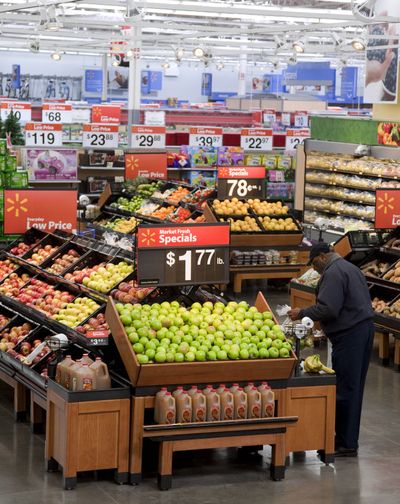U.N. says food prices are at 20-year highs
Rising affluence, ethanol use seen as major factors in spike

ST. LOUIS – Prices for major crops climbed Thursday as a U.N. agency said food costs are now at their highest point since the agency began tracking them 20 years ago.
Global prices have surged 2.2 percent just in the past month, according to the U.N.’s Food and Agriculture Organization in Rome. The FAO’s index, which measures the price of staple food items and big commercial crops like corn and soybeans, reached its highest level since 1990.
The price increases have been driven by cereals, meat and dairy products. After rising for eight months, global prices of corn, wheat and soybeans are near record levels set in 2008, when riots erupted in countries like Haiti and U.S. food prices jumped.
U.S. consumers are relatively shielded from the higher grain costs. Average incomes are higher in the United States than in most of the world. And the cost of grain represents only a small portion of the prices U.S. consumers pay for food products. Still, U.S. prices are expected to creep up later this year for items ranging from poultry to soda to wheat bread.
In the developing world, the effects have been dire. Higher food prices have pushed an estimated 44 million people into extreme poverty. Economists think the problem could worsen as governments curtail grain exports to increase their own stockpiles.
At the heart of the problem is rising demand for crops. New middle-class consumers in China and India are eating more grain and meat than ever. At the same time, a burgeoning ethanol industry in the United States is consuming about 40 percent of the entire corn crop.
“Stock levels have run down, and that’s partly for policy reasons,” said David Hallam, director of FAO’s trade and market division, referring to mandates in the United States for how much corn-based ethanol must be used in gasoline. “There isn’t much of a cushion there.”
Higher oil prices have complicated the problem. Oil prices can drive up food prices by raising the cost of transportation and production for farmers and food processors. Higher gasoline prices also encourage ethanol producers to buy more corn and blend it into fuel. That can further raise corn prices.
The FAO index records monthly changes in international prices of a basket of food commodities. That basket includes cereal, oils and fats, and sugar.
Oxfam, an international aid group, urged governments to try to rein in food prices. It suggested doing so by curbing the ability of speculators to trade in commodity markets while limiting the amount of grain used for ethanol production.
“Millions more people are sliding into poverty as they struggle to afford basic food supplies,” said Thierry Kesteloot, food policy adviser for Oxfam. “A sit-and-wait attitude among governments in the hope that there will be good harvests over the next few months means gambling with people’s lives.”
In the United States, the cost of grain accounts for only about 10 percent of the total food price. In part, that’s because so much of the food Americans eat is processed. Still, meat companies like Tyson Foods Inc. and Smithfield Foods Inc. try to pass on higher grain prices as their profit margins disappear. Grain is the biggest cost of raising chickens, hogs and cattle.
Food stores have been reluctant to pass on higher costs to consumers who are struggling with a jobs crisis and higher energy prices. Many people might not be able to pay more.
But grocery chains are starting to pass along to their customers rising costs for dairy, meat and other foods and household items. Goldman Sachs analyst Andrew Tilton has said he expects consumer food inflation to jump 5 percent by the middle of this year.